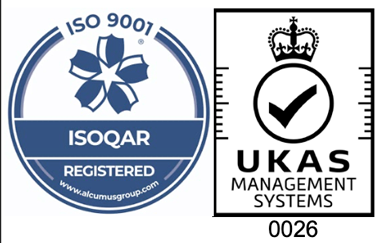The Ultimate Guide to Synthetic Rubber
6th June, 2022
Synthetic rubber is an artificial, man-made elastomer, whereby polymers are created through the use of petroleum-based monomers. In this guide, we take a closer look at what synthetic rubber is, the different types, and how it is manufactured.
Synthetic Rubber
As automation became widespread within the manufacturing industry, natural rubber was no longer a suitable material for the required application, having a low melting point of approximately 180°C, becoming brittle, and losing structural integrity, natural rubber could not perform effectively within these high temperature environments. This caused a need for an alternative rubber material with higher resistance levels to heat, abrasion and chemicals for effective and efficient automation within the industry. To meet the evolving industry requirements, different types of synthetic rubber with varying properties were developed.
What is it Used For?
Synthetic rubbers are used and relied upon on a daily basis. Used across range of industries, synthetic rubber has a wide range of applications, including seals, o-rings and gaskets to hoses, belts, and flooring.
Types of synthetic rubber
Despite synthetic rubber being man-made, it is as reliable as natural rubber. At Aquaseal Rubber, we process and manufacture a variety of synthetic rubbers inhouse. See the list of synthetic rubber we currently manufacture at Aquaseal Rubber and how they are made:
Neoprene
Neoprene rubber is based on polychloroprene (a polymer composed of chloroprene, acetylene, and hydrochloric acid). At Aquaseal Rubber, we formulate high quality neoprene by modifying the chemical structure of polychloroprene, and adding elements to ensure the end rubber product has a range of chemical properties.
Ethylene Propylene Diene Monomer (EPDM)
Another synthetic rubber is EPDM, which is based on ethylene and propylene. To enable us to cure this rubber with sulphur, we add a small amount of diene to these compounds, causing changes to the chemical structure which creates EPDM.
Styrene Butadiene Rubber (SBR)
Using styrene and butadiene, SBR, a polymeride is created. Before being combined with styrene/butadiene, the identified compounds are derived from petroleum at an oil refinery.
Butyl Rubber
Butyl rubber is a copolymer, which is created using isobutylene and isoprene. These compounds enable the rubber to be vulcanised.
Fluoroelastomers
Fluoroelastomers are a family of copolymers originally composed of hexafluoropropylene and vinylidene. We modify the consistency of our fluoroelastomers to offer premium, long-lasting reliability even in some of the harshest environments.
Silicone Rubber
To improve the performance of a silicone and oxygen polymer, various chemicals are added.
Buna N Rubber
Buna N rubber is comprised of two copolymers, acrylonitrile and butadiene. Buna N Rubber is created when acrylonitrile reacts with butadiene (a synthetic chemical compound).
Rubber Sustainability
Unlike natural rubber, Synthetic does not occur naturally. As a whole, synthetic manufacturing is part of a global effort to reduce waste and create a more sustainable rubber production process, with base compounds in synthetic rubber primarily being polymers synthesised from petroleum byproducts.
What is the synthetic rubber production process?
There are a number of steps involved in the synthetic production process, with some steps varying depending on the type of synthetic rubber that is being manufactured. The key steps involved in processing and manufacturing synthetic rubber include:
- A hydrocarbon mixture (derived from oil or coal) is created and refined.
- A flammable liquid hydrocarbon mixture is combined with natural gases to create monomers, which are used to bind molecules together to create polymers. Commonly used monomers for synthetic rubber manufacturing include Styrene-Butadiene Rubber (SBR), Nitrile Rubber (NBR) and Butyl Rubber (IIR).
- To form a rubber substance, chemical agents are used to turn individual polymers into polymer chains.
- Vulcanisation adds accelerators, processing the rubber substance into a durable rubber product.
- Finally, the rubber is moulded into the required shape, with quality checks being conducted afterwards.
Get in touch
We have manufactured rubber in house for over 45 years and are highly recognised within the synthetic rubber industry for the quality of our rubber products. For rubber solutions you can trust, contact our rubber specialists today.


